Yesterday I was exploring the wild moorlands of Yorkshire and it got me thinking about the remote desert landscapes I’ve spent time in in the American South West, so here’s a rerun of one of the trips into that desert, set to my own composition.
Month: June 2022
Yesterday I ventured into the wilderness. I’ve spent much time in the deserts of the American South West, exploring former mining towns that today are marked by the desolate ruins of mining camps but I’ve never had a personal connection with someone who actually lived there. Today I was to visit “one of the wildest and most sequestered spots in Yorkshire,” as the newspaper described it in 1827. For here in that far off year one of my distant ancestors had been murdered. I’d come to see the very spot in which the crime was committed, and perhaps to stand even in the very room that this heinous deed was done.

I’d been eager to visit the place for the past three years ever since learning of my family’s connection with this event but I knew that it was difficult to reach and had, in fact, been warned off attempting to go by myself by someone who had been there before. Paths that petered out, peat bogs that suck in the unsuspecting hiker, sudden fogs that blanket the moor so that you cannot see your own hand in front of you. Such are the hazards of hiking this moorland. However, last week my blog had generated a response from someone who had been there recently and offered to guide me to the site. Luckily the weather had been unusually lacking in rain for the last week or so and with the forecast to be reasonably warm and sunny yesterday we made the trip.
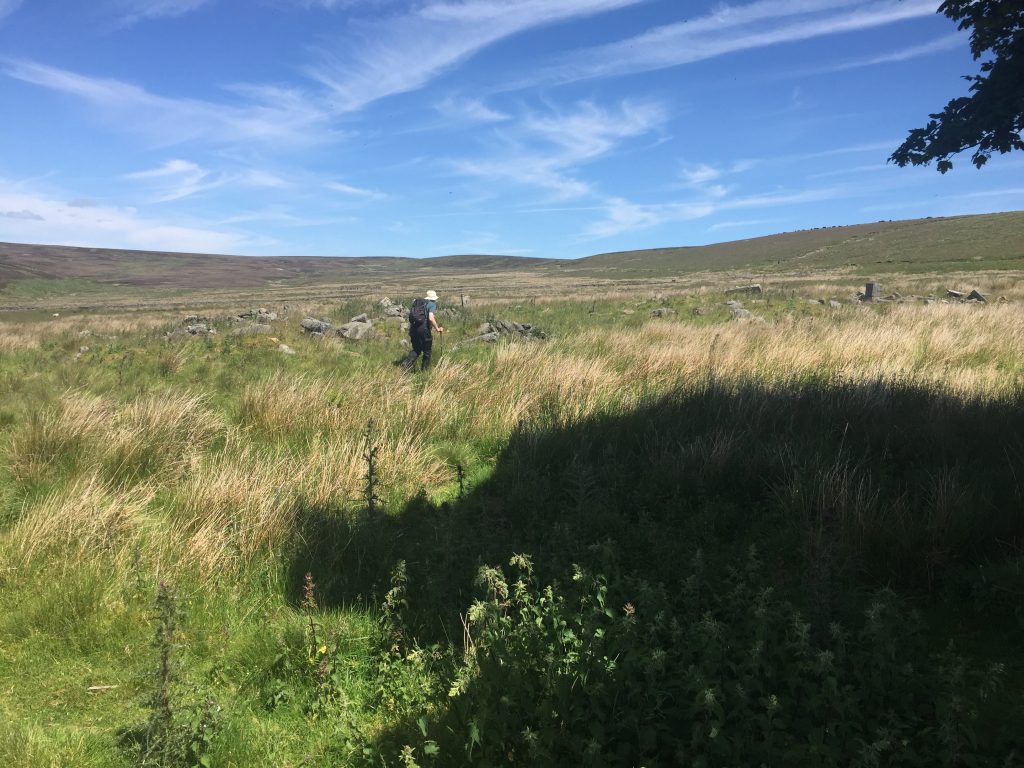
Parking opposite Widdop reservoir, just beyond the Pack Horse Inn, the moorland of Widdop moor stretched out before me. After climbing 1000ft from Hebden Bridge once on the tops the moorland is fairly flat, with gentle undulations across the peat, and the occasional stream. You can see for miles in every direction, and there’s not a single building in sight apart from the occasional glimpses of the inn. Today vapour trails from aircraft drew lines across the blue sky, curlews and lapwings flew above us and my eagle eyed guide even spotted a kestrel. From time to time the jagged teeth of ancient walls broke up the peat bogs and stone gate posts spoke of long-gone paths and human life here centuries ago.

In the early years of the 20th century the three reservoirs of Walshaw Dean were constructed and the path we were to take was one of the maintenance roads for the reservoirs. Indeed the only people that we saw on our walk were from a construction lorry using the road.
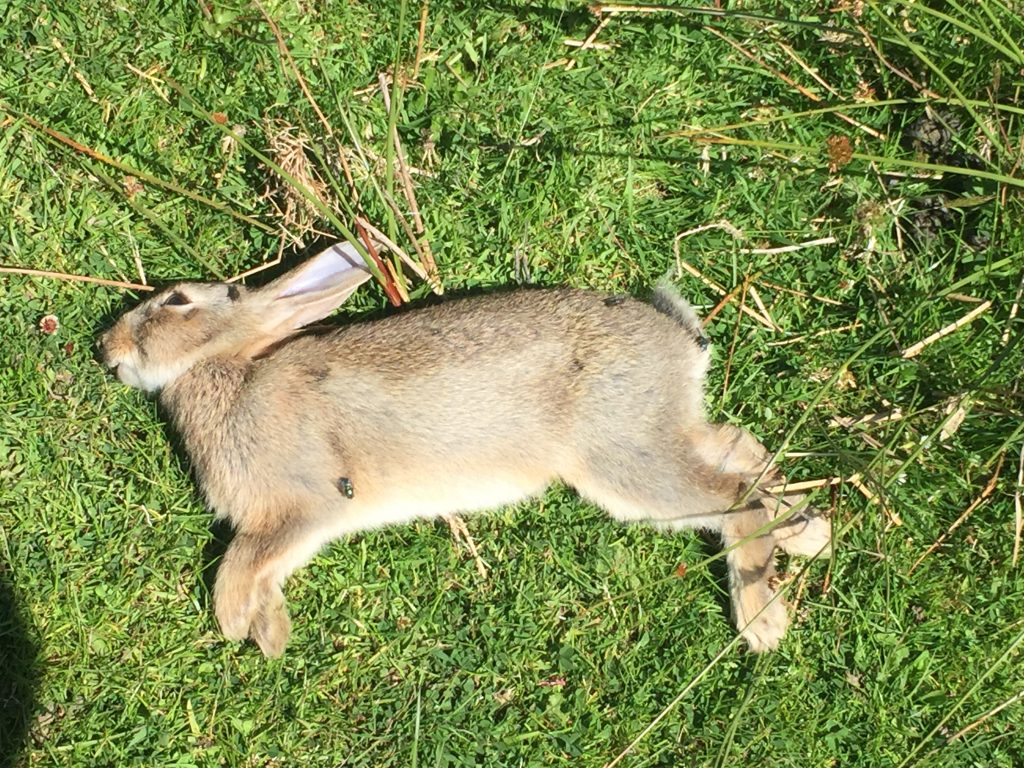

After passing a forest we headed upward, across Greave Pasture and, if it had not been for the presence of a solitary tree marking the spot the pile of stones that had once been Good Greave farm was barely distinguishable from the moorland amidst the long tussock grass. It was obvious that many of the stones had been removed from the site but why? Who lived in such an isolated spot? Where did they buy food? How did they give birth? Early maps show a path to the farm that follows a more direct route to the farm but that path, though shown on the OS map no longer exists.
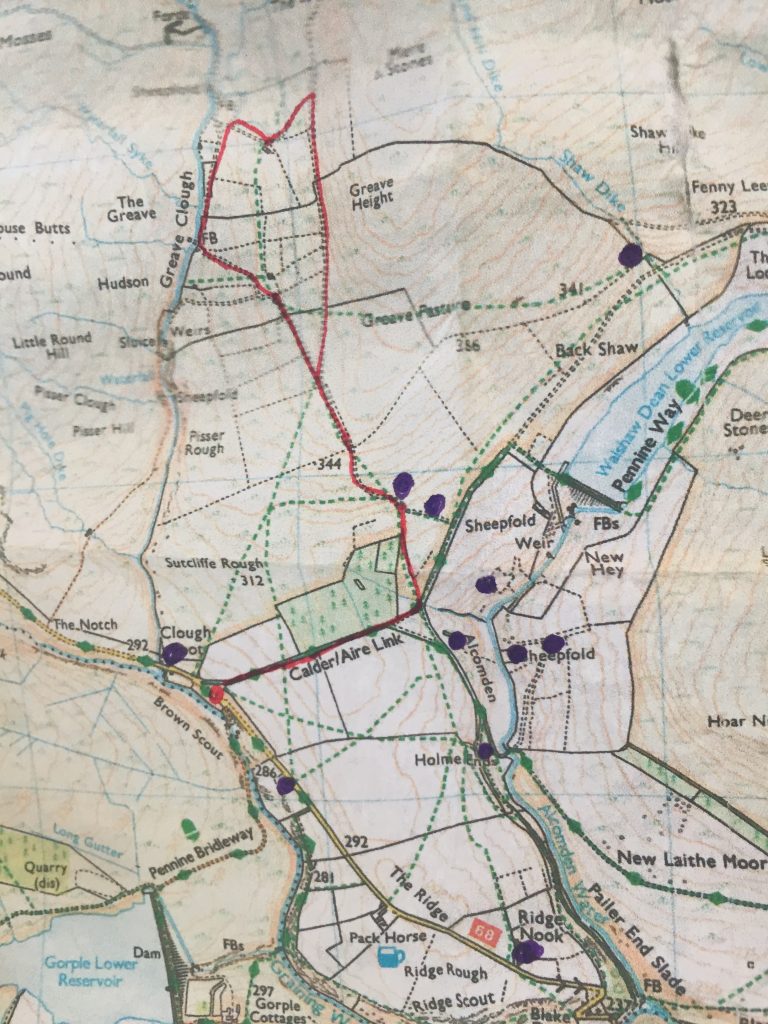
In 1827 a remote farm on this moor had been the scene of a horrific murder that made headlines in newspapers all across the country. A policeman was even sent from London to attempt to solve the gruesome crime on this lonely moor. The victim was 71 year old James Shackleton. This area already had its reputation as a God-forsaken place. “Our moors put you in fear o’being stabbed in the back! We are without cultivation except for kicking one another to death in clog fights o’ the long dark winter nights. This is a godless place, dark and inhospitable.” So comments Mary Lockwood in the fictionalized account of Rev. Grimshaw’s life written by local author Glynn Hughes and set a hundred years before the Greave murder. 1 the Hell-fire Methodist preacher Grimshaw is considered to be one of the founders of the Methodist faith along with the Wesley brothers and was vicar of Haworth church before Rev. Patrick Bronte.
I’d met up with John Shackleton, a descendant of the victim in June, 2020, and I learned of his recent attempt to reach the site of Good Greave farm for himself. “I went up to Good Greave last year; there’s a track up from the Yorkshire Water road which goes up to Walshaw Reservoirs. Of the site of Near Good Greave farm where there were several buildings show little remains. If one persists and goes further you can see the ruins of the Far Good Greave farm but it’s exceedingly difficult to access.” He urged me not to try and access the site by myself but showed me a photo which show a door frame and lintel, all that remains of man’s presence in a peat ridden landscape with not a road or building in sight.
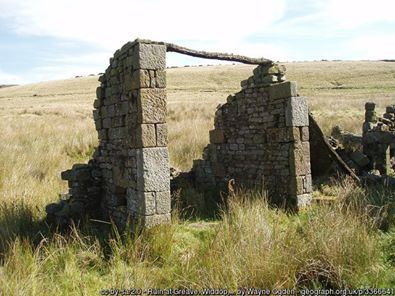
On his website John documents the story of the Shackletons of Widdop, putting them into their historic context. “The farming community of Greave which comprised two, possibly three farmsteads has been in the possession my Shackleton ancestors since 1790 that I can trace directly, but there were Shackletons living there four centuries ago. A 1604 survey of the Savile estate lists 26 farmsteads in Wadsworth, fourteen of which were owned by Shackletons and the document specifically mentions two at Good Greave.” 2 Indeed, in an article entitled ‘Travellers not made but born” the Todmorden and District News of February 1910 holds that “residents of Hebden Bridge show great determination and grit and a better exemplification of it could not be found than in the person of Sir Ernest Shackleton, who it was known had descended from old family which originated at Shackleton-hill on the Wadsworth side.”3 Perhaps that particular connection was wishful thinking on the behalf of the author. *
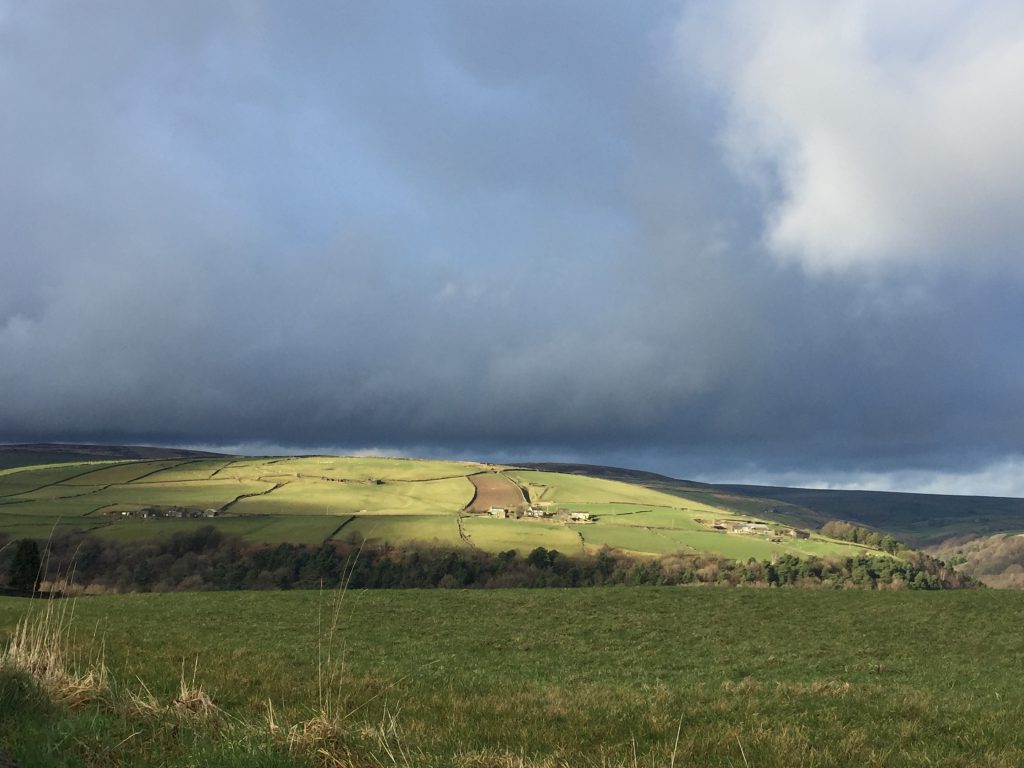
The most comprehensive account of the ‘horrid murder’ of James Shackleton was in the Manchester Mercury, June 5, 1827. The article not only gives a detailed description of the character of the victim but conjures up the remoteness of the area around Greave farm and is worth recounting in its entirety.
“Horrid murder, Wadsworth, near Colne in one of the wildest and most sequestered spots in Yorkshire, distance about 13 miles from Halifax and 7 from Colne, and within 2 or 3 miles of the Lancashire border in a district celebrated for majestic scenery. In this nook of the country, a place called Good Greave in the township of Wadsworth, is situated; the former is the scene of this horrid crime; it consists of only four houses, two them separated from the rest by a distance of about a quarter of a mile and the nearest them within a mile of the Halifax and Colne road. Stretching towards Colne, Haworth, or to Blackstone-edge in different directions, the township of Wadsworth consists of heaths and the deep ravines running between them. Nearly the foot of a steep aclivity, and within short distance of one of the gullies which carry off the waters from the mountains lived James Shackleton, an old man in the 7lst year of his age. In the dwelling where his existence was at last prematurely terminated, he first drew breath; that and the surrounding acres were his paternal estate, and by careful habits and moderate desires, he had rendered himself a man of considerable substance. Satisfied with much less of the good things of this life than he had the ability to purchase, in that he did enjoy a brother and sister, also advanced in years, but younger than himself, participated; the three having chose a life of celibacy, they were restricted so far as regards family and social intercourse, to themselves, except, indeed, their nephew, residing just at hand, who had a wife and three children.
On the night of Wednesday the 23rd about half past nine o’clock in the evening, the unfortunate victim, James Shackleton and a man named Richard Smith, an aged house-carpenter dwelling in the house until had completed a few jobs, were sitting over a cheerful fire of peat, waiting the return of Thomas Shackleton, the old man’s brother, who had gone a short distance from home, on some business, relative to the formation of a new road. The sister Mary Shackleton had gone to bed, when six men entered the house, armed with bludgeons, and one of them, going up to James Shackleton, said “he wanted to purchase a cow.” This excited some astonishment in the old man, who replied that “that was a very odd time to come on such a business.” A demand instantly followed for his money, with which the old man hesitating to comply, the carpenter, Smith, said, “James, if you have any money, pray give it them.” Two cur-dogs in the house barked most furiously at the villains who struck them with their bludgeons. James requested them to desist doing so, and he would quiet the dog. They, however, still continuing bark, one of the men, with a knife or some other sharp instrument, made a desperate blow at the larger intending cut his throat, but he only made a deep incision in the neck the animal. The men insisting immediate compliance, James rose from his seat, and proceeded to a chest of drawers, from whence he took out two purses. These, the villains said, only contained copper, to which he answered that there was both gold and silver in them. They then told him that had £lO, in the house, which he had received for a cow that he had sold. This he denied, as, if the cow was sold, he had not yet received payment. The villains then struck the old man and the carpenter with bludgeons, but particularly the former, and demanded all he had, while some of the party took down two hams, and gun and pistol, which were hung up in the house. The carpenter, being alarmed for his own and his employer’s safety, got up and proceeded towards the door, to call the nephew, but was interrupted by two men at the doorway, armed with pistols, who declared that, if he stirred a step, they would blow his brains out. He then returned to the house, and the men were preparing to retreat, after the old man had surrendered his all. Fearing, from their ill treatment, that they would take his life, the old man had risen up, and gone towards the window, which had no open casement, and was calling for his nephew. From this circumstance, and the yelling of the wounded dog, it is probable a sudden fear seized the murderers. On their rather hastily retiring a voice was heard to exclaim “d–n him, shoot him,” and one of them, armed with a gun, seemed return to complete their crime, for on arriving at the end the passage, from whence he had a view of the man at the window, he levelled his piece, and shot him under the left shoulder blade, the shot penetrating through the body and coming out at the breast. He instantly fell, covered with gore, and having been laid abed on the floor of the house, the purple flood continued to flow until life was extinct. This closed the unfortunate man’s life, within half hour after the occurrence. Medical aid was sought soon as any one dared to stir out, but found, it was in vain. The nephew, John Shackleton, first became alarmed hearing one of the dogs make an unusual noise (probably when the wound was inflicted upon him) and laying down the pipe which he was smoking, he proceeded towards the house to inquire the cause. On approaching it, he saw a man standing in the passage, and supposing it to be his uncle Thomas who might have just returned home, shouted ‘ hallo’. To this no answer was returned. He then retraced his steps, and entered his own house; but not satisfied with what he had seen, he returned immediately, after locking the door of his house, for his own family’s security. Having again sallied forth, the man in the passage ran at him, as he approached, and exclaimed “I’ll kill the devil,” inflicting, at the same time, a severe blow on one of his shoulders. It was then that the nephew became sensible of the danger. When precipitately retreating, he heard the cry of “d–n him, shoot him,” and instantly saw the flash of gun in the house. He ran to loose a bull dog which was tied up on his own premises, and while so engaged, the villains appear have left the house, for, on his again coming forth he heard nothing but a kind of murmuring noise, as if from the voices men, ascending the declivity, nearly at the foot of which the house was situated. The men were only about ten or fifteen minutes in the house, and on leaving it went in a direction towards Haworth, over the moors, but this, no doubt, was a feint to elude detection.”4
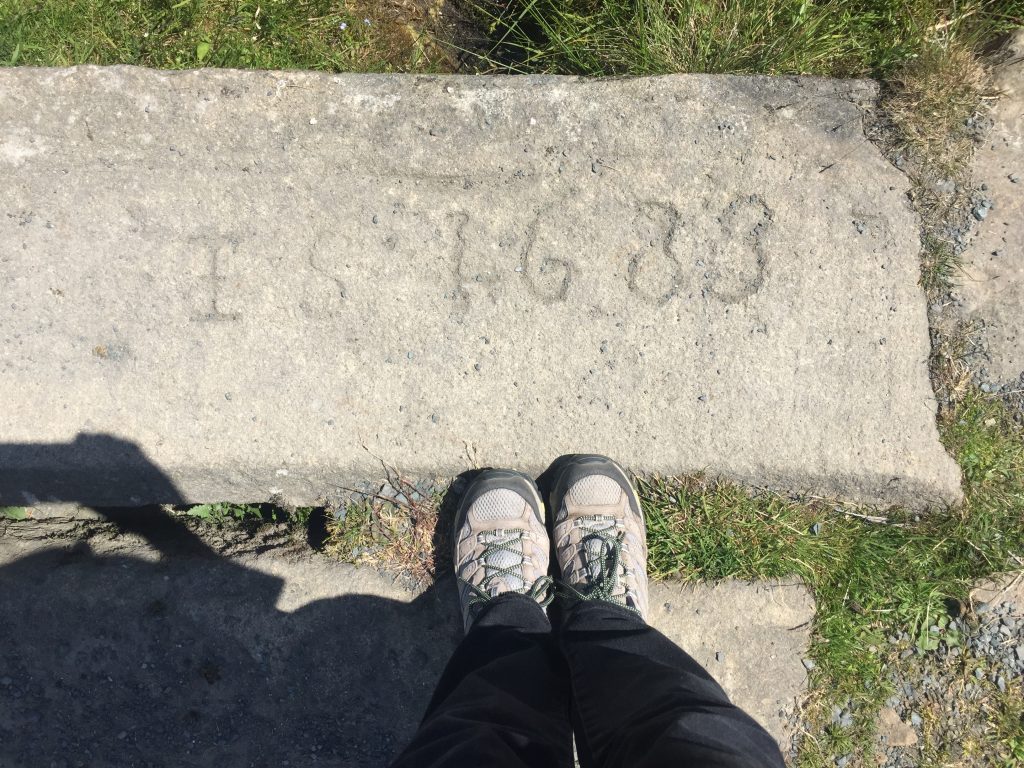
Four days later in the Sheffield Examiner we read ‘The body of the unfortunate James Shackleton has been opened by a surgeon, who states that the wound was not inflicted by small shot, as was reported, since, in the course of his inquiry, he found two slugs, which had apparently been cut off from the handle of a spoon.”5 Someone was taken into custody but discharged and according to the obituary of James’s brother, Thomas, the murderers were never discovered.
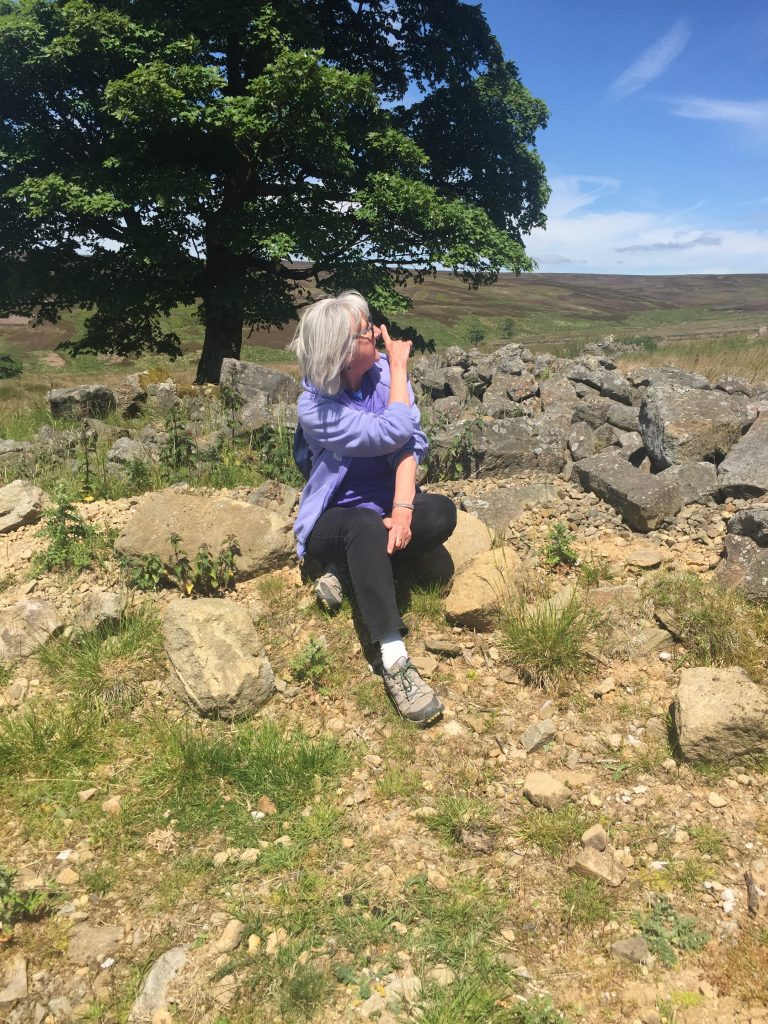
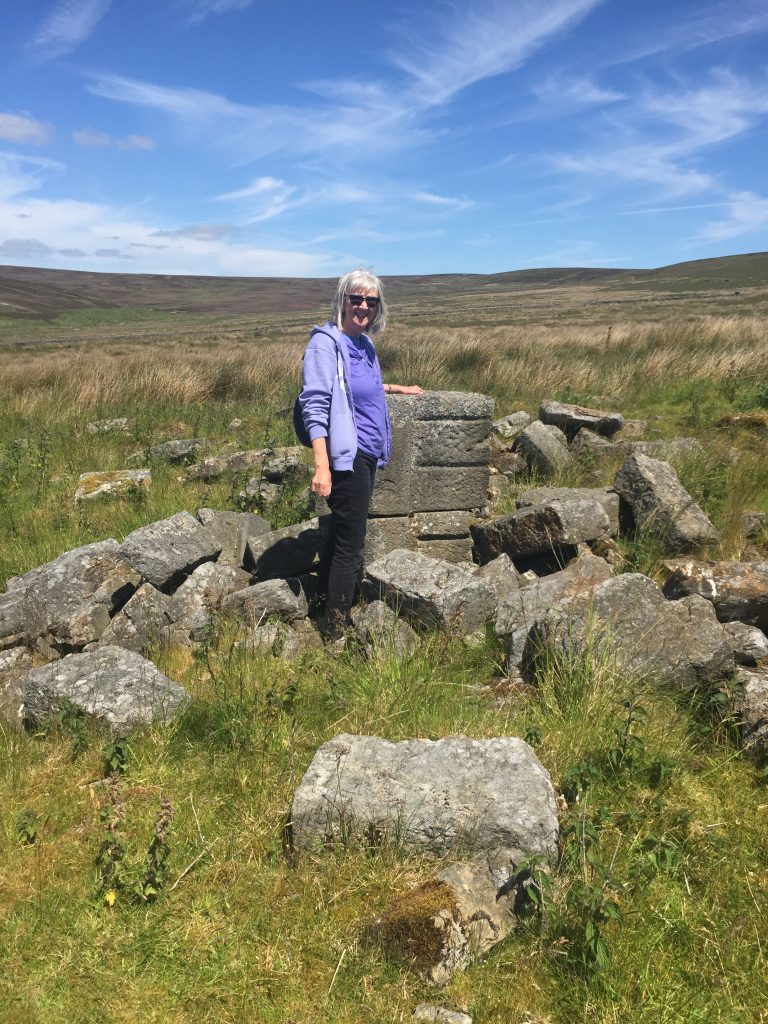
Showing the front door
Sixty years later the murder was still a hot topic in the local press and it was still on the lips of people in the community. One local writer who was intrigued by the story was Tattersall Wilkinson, known as ‘Owd Tat.’ The youngest of twenty one children from Worsthorne near Burnley, the village where my mother-in-law grew up, he took an interest in astronomy, archaeology, geology and natural history. He spent some time with “old Sally Walton” who eked out a living in a two storey cottage close to the road at the bottom of Widdop pass. “Witch and boggart tales she thoroughly believed—and many a happy hour has your humble servant passed by the turf fire side listening to the tales of yore told by the venerable dame.” According to Sally the area around Crimsworth Dean and Pecket Well was “infested with a gang of desperadoes – poachers and house breakers. Sally tells us more about the carpenter who was staying at Greave– Richard Smith known as “Old Dick o’ Whittams” who lived at “Th’ ing Hey” near Roggerham Gate. I find these names so priceless and evocative of their time. Adding further fuel to the drama, the robbers who had ‘blackened faces,’ finding no ammunition for Shackleton’s gun “in a most deliberate manner took a leaden spoon from off the table and cut it into slugs.” 6 An inquest was held upon the body of of James Shackleton, at the Ridge public house, before Mr Stocks and a very respectable Jury. * The former Ridge pub, now the Pack Horse, Widdop Mr H. Thomas of Hebden Bridge, surgeon, stated that the deceased died of a gun-shot wound which injured the lungs, heart and pericardium.
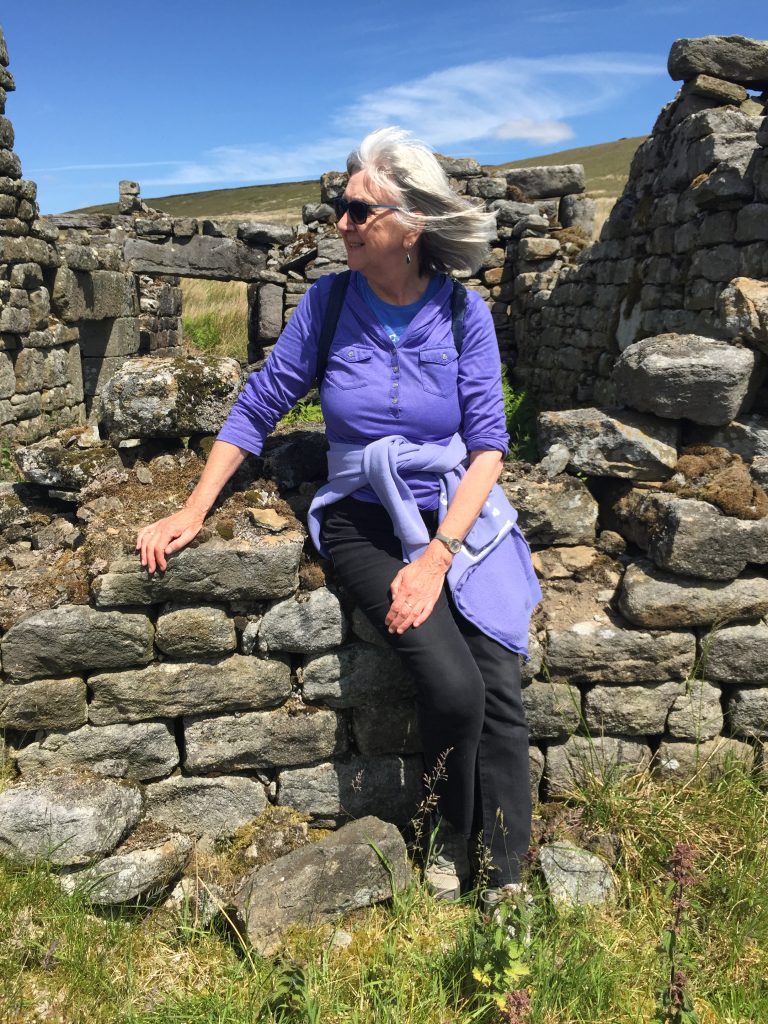
Amidst the more substantial ruin of Far Greave 
Far Greave. Is this the room where James was murdered? 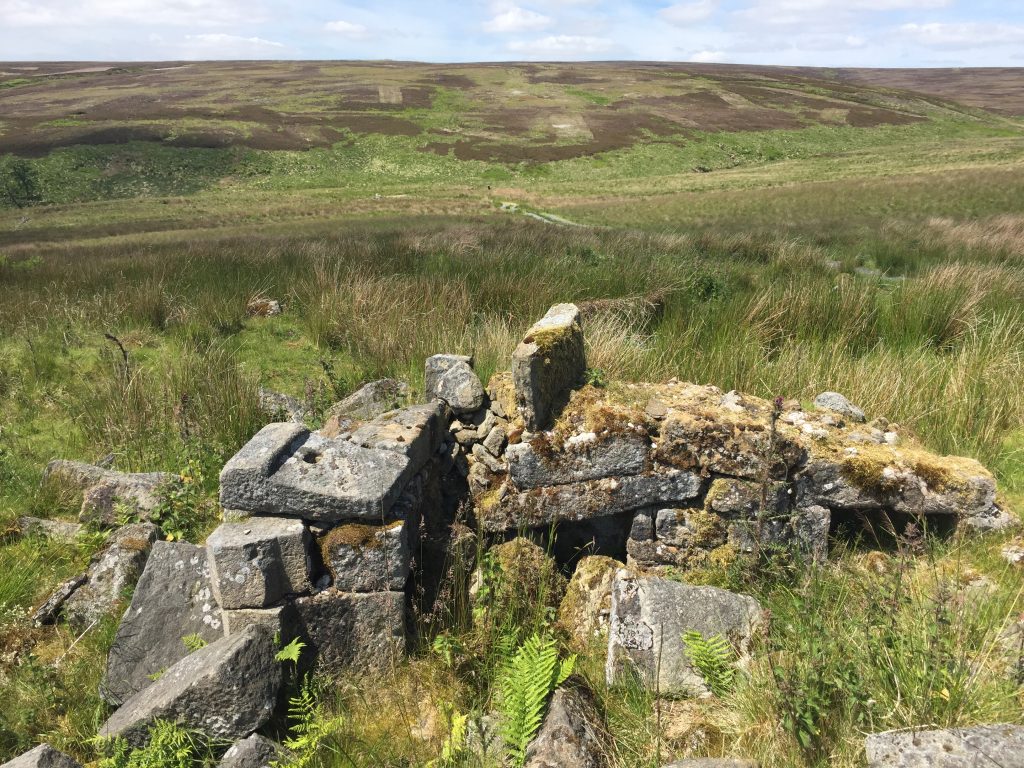
Dressed stone shows evidence of a substantial building
And after all the evidence had been heard the Jury returned a verdict of ‘Wilful Murder against divers persons to the Jury unknown’. A substantial reward was offered but the murder remains unsolved. The gun, however, according to Eric Shackleton, a descendent who contacted me from New Zealand, is in the possession of his brother. I needed to put to rest the gruesome story and so I sought out James’s burial record. Usually only the name, age and location of a person’s home is given here seven lines of minute text carefully squeezed into the column recording James’s burial at Heptonstall showing the devastating effect that this murder had on the community.: ‘Six men went to his house on purpose to rob – demanded his money-accordingly he delivered two purses to them – and they went out of his house after they had received them. He went to look out at the window. One of the robbers turned back into his house and shot him with slugs out of a gun so that he was both robbed and murdered in his own house about 9 o’clock at night, May 23, 1827.’
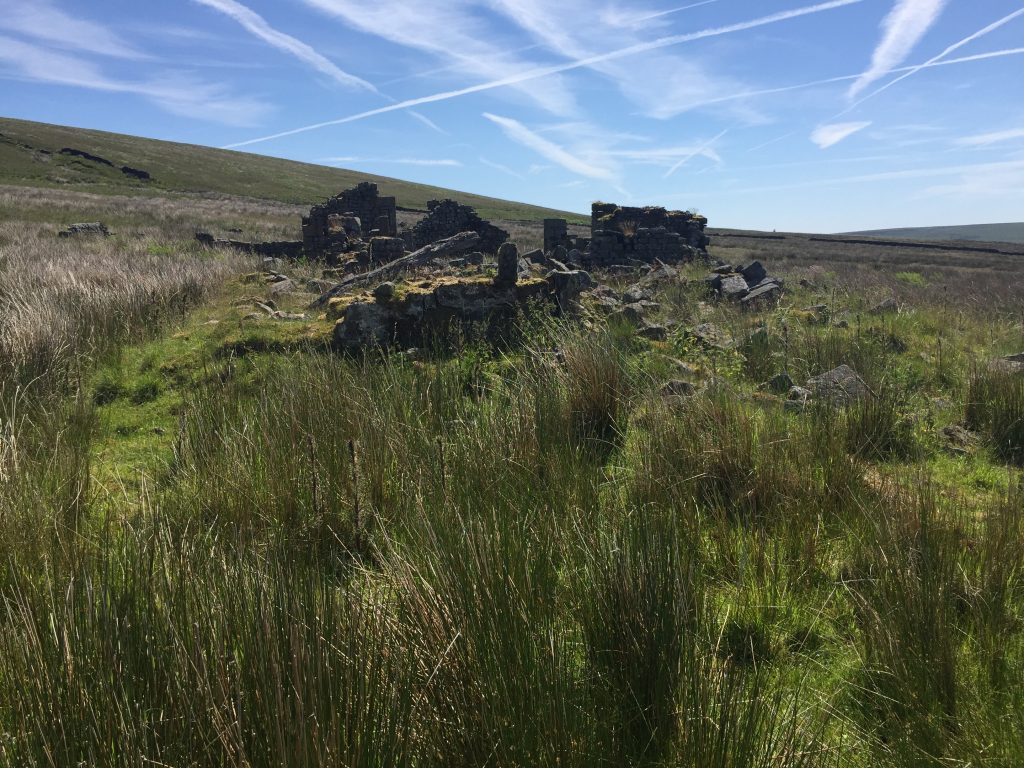
The inquest took place at The Ridge pub, now known as The Pack Horse. By law inquests had to be carried out in a public place and so inns were frequently used. I’ve been in the inn several times, most recently to say hi to the new landlord who recently moved there from The Cross Inn in Heptonstall. As I’d sat in the lounge six weeks ago I’d looked out at the open moorland and thought about the murder of my distant ancestor, hoping that I would have the opportunity to reach his farm.
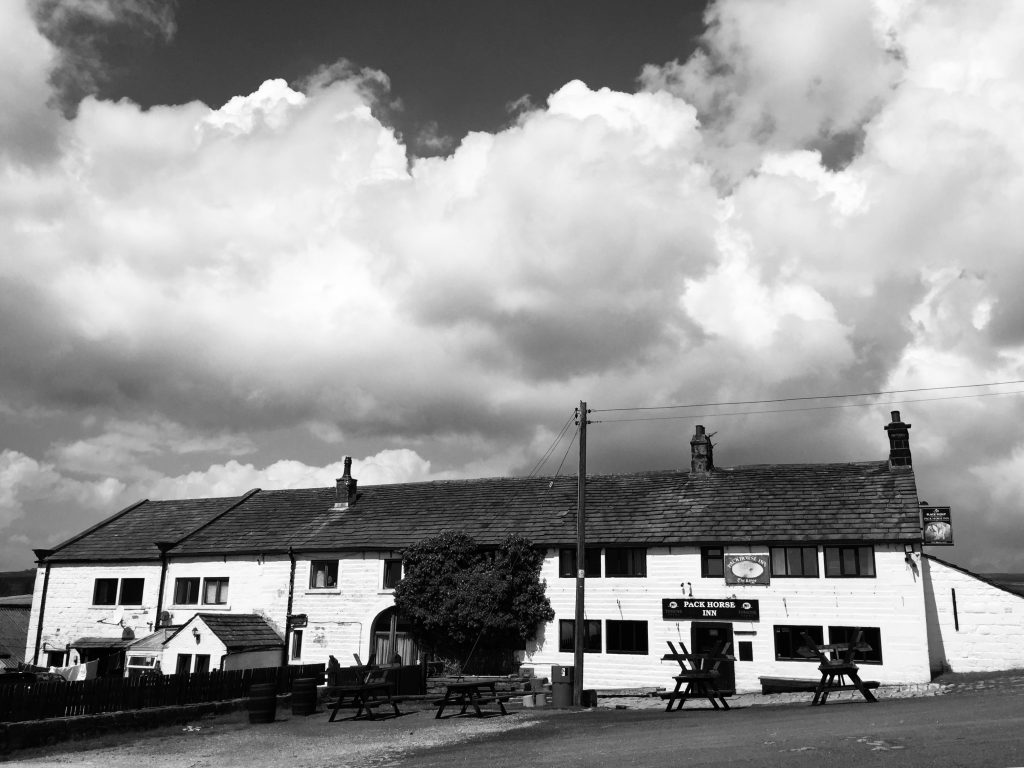
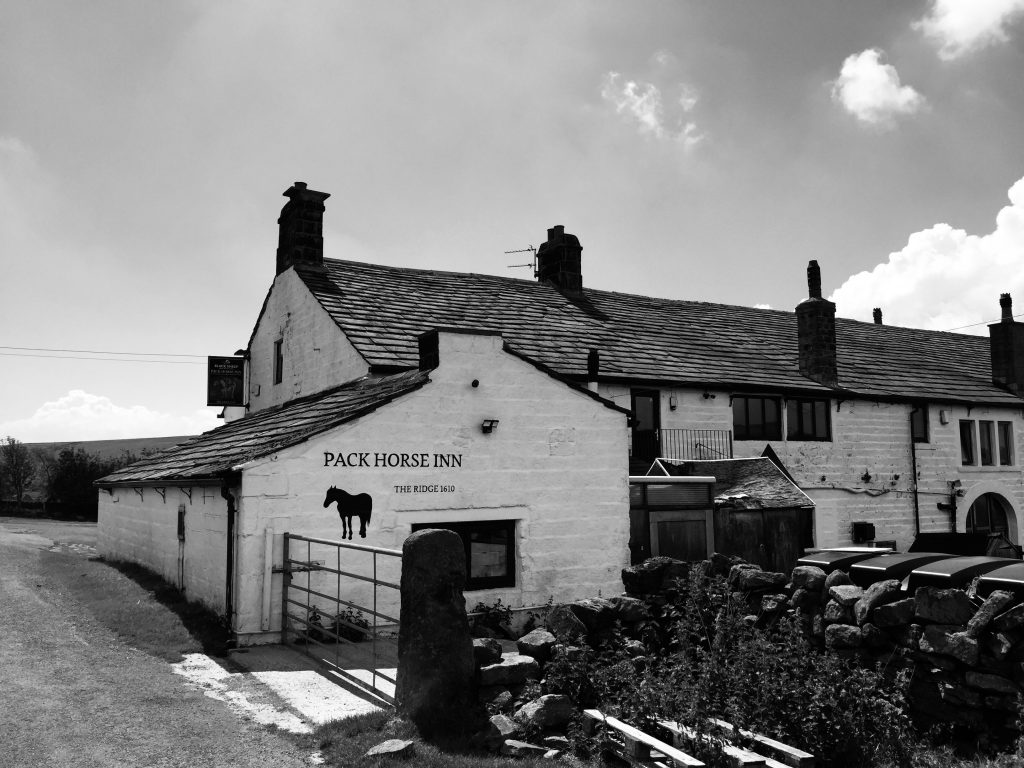
The Pack Horse, Widdop
On January 25, 1906 the license of the Pack Horse was transferred to husband and wife Gibson and Isabella Butterworth. Isabella’s first husband was Thomas Shackleton, the murdered man’s great great nephew.
In front of me, on the wall, was a photo of the trestle bridge, built to transport supplies and men during the building of the reservoirs. Ada Harwood, another ancestor, fell to her death from the bridge in 1909 on a sight seeing excursion. Her story, and that of her husband who was killed when the grinding stone he was using to grind a shuttle exploded, will be told on a future page.
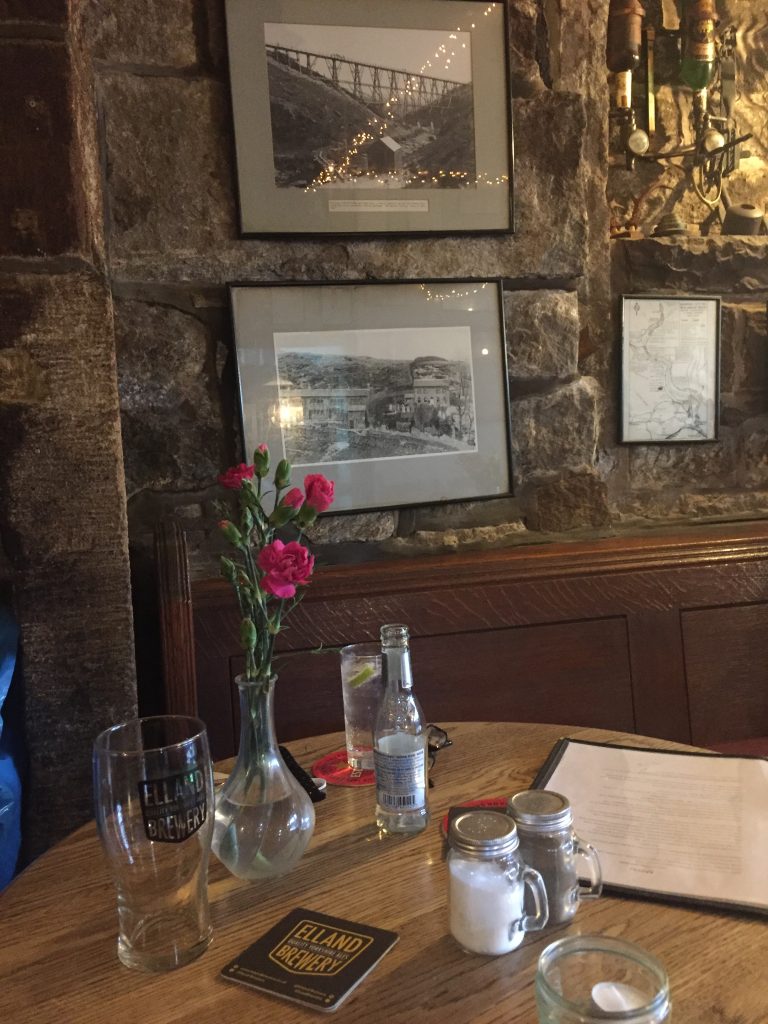
1 Where I used to play on the green. Glynn Hughes, p.8
2 http://www.widdop.moonfruit.com/my-widdop-shackletons/4560553398
3 https://www.britishnewspaperarchive.co.uk/viewer/BL/0001940/19100218/103/0006?browse=False
4 https://www.britishnewspaperarchive.co.uk/viewer/bl/0000240/18270605/029/0004
5 https://www.britishnewspaperarchive.co.uk/viewer/bl/0000491/18270908/040/0004
6 https://www.britishnewspaperarchive.co.uk/viewer/bl/0000283/18870507/155/0009

Less than a week later a chance encounter jogged my memory of a poem written by one of my ancestors about James Shackleton’s murder. I was attending an exhibition and slide presentation of photographs taken by local people in response to The Crossings project – “Our aim was simple: encourage people to explore our wonderful local landscape, by themselves or on a group walk, and think creatively about what they encountered, on the theme of Crossings, snapping photos as they went.”
I had submitted a few photos and these were shown in the exhibition. I was absorbed in the 2 hour slide show when a voice in my ear whispered my name. I looked up to see a dad with a young son. It turned out that we had exchanged several emails about our respective blogs about visiting off the beaten track places in Calderdale but had never met. He and his son both had photos in the presentation. When I arrived home I looked up our email exchanges and – don’t you know it – one was about whether he had ever hiked to Greave farm. He hadn’t. I mentioned a poem written by one of my ancestors about the murder. I’d forgotten about it when I’d visited the farm. It was written by Joseph Hague Moss who founded a school in Hebden Bridge and was the founder of a dynasty of teachers in the area. Joseph died in 1861 and his son collected his poems and had them published the following year.
James of The Greave
Where the wild game in summer the heath flowers among,
Invite the bold sportsman to range o’er the moor;
And where deep rugged dells roll the echo along,
There has stood an old mansion a century or more;
Where far from the gay world, unskill’d to deceive,
Contented and happy dwelt “James of the Greave.”
In his lambs and his sheep, and the moorland close by,
He took great delight, and increased in wealth;-
A harmless old man, with a glance in his eye,
And a glow on his cheek, that gave picture of health;
And he might have sunk gently, like sunset at eve,
Had others been harmless as “James of the Greave.”
But the sportsman may chase the wild game on the moor,
And the innocent lambkins may bleat in the fold:
The man that beheld them with pleasure before,
Is wantonly murder’d at seventy years old:-
And long from the bosom remembrance shall heave
The wild note of sorrow for “James of the Greave.”
For photos of Isabella and Thomas who lived at Good Greave: http://blog.hmcreativelady.com/2020/06/18/unhappy-family-differences-a-drowning-death-by-chamber-pot-irish-lawlessness-at-widdop-and-this-is-just-part-one/
History of 3rd Bungalow
According to Affetside’s resident historian Jim Francis just after World War I three wooden chalet type bungalows were built on the open ground in front of the Pack Horse. Number 1 was built around 1923 by Mr. Blenkinship, number 2 in the 1920’s for Jim Yates and his family, and number 3, ours, was built for a Mr Dunkerly on the site of Lower Nuttalls Farm, and modified, still exists today.
The date stone on the ‘barn’ is 1824. There was formerly a farmhouse on this site named on early maps as Wickenly House. I remember a huge inglenook fireplace in the barn, so I think our ‘barn’ was the farmhouse.

My parents bought the house on June 19th, 1953 from Joseph Daniels, a warehouseman and his wife Sarah Ann Daniels for £395-cash. My parents looked at 2 other properties that they could buy with cash – Salt Pie Cottage, a remote building with land, on the moors off the road to Edgworth, and a terraced house in Tottington’s Cann Row, but this latter one was up a steep hill from the village and not a good prospect given my dad’s poor health. I have the deeds to 3rd Bungalow. I also have papers describing Lot 28-no date- ‘Lower Nuttalls’ or ‘Wickenly House’ – a small holding containing 17 acres, 1 rood and 3 perches statue measures or thereabouts, in the occupation of Thomas Holt, yearly tenant. It consisted of 4 fields.
In the 1841 census Lower Nutalls is occupied by James Scholes, plasterer, Mary 35, Ann 20, Wright 15, Betty 8, and James, 3. However, there’s a second Lower Nuttalls on the same census – James Scholes, 30,a painter, Ann, 30, Alice 11, Mary 9, Nancy 5, Ann 3, and Thomas 7 months. I found these and downloaded them.
In the 1871 census we have at Lower Nuttalls Thomas Lowe, 46 farmer of 9 acres, born at Harwood, his wife Margaret, John, 19, quarryman, James 15, joiner’s laborer, Andrew 12, and Alfred 6. There is also David Mills father-in-law – widower Aged 66 a wheelwright.

The front porch is built but there is no garage. The roof is the original. The former army land rover was painted aqua blue
Higher Nuttalls is visible on the right. Photo around 1920. The barns are collapsing creating the gap for the future ‘Rocket’ turnaround
From ‘Memories of People I have met during the last few years – approx 20 years,’
by Hilda Denton:
Gwen Holt called today – Sunday, August 1984. She told us she used to live in a caravan
situated behind our barn (so that it was sheltered from the high winds etc). Her and
her mother lived there a few years. She attended Affetside day school. This was before
the last war. Later she went to Folds Road central school. They moved to another
caravan situated on the field on the left going down Black Lane behind Watling Street.
Her father kept a farm down Riding Gate. Her married name is Mrs Dyson, 31
Sycamore Road, Tottington. She remembers a man and his wife living in 3rd bungalow
aged about 28, Milton Hulme. He kept a corn millers store on Bradshaw road near the
Crofters pub. It is still there – a corrugated place – and it has remained empty ever
since he hanged himself in the shop whilst he lived at 3rd bungalow. His wife had a 6
week old baby at the time. Gwen remembers to two policemen coming down the fields
and asking her where the bungalow was so that they could tell his wife
the news. Later his wife went back to where she was brought up, Staffordshire.
Life could be difficult at 3rd Bungalow: My mom’s diary – December 29, 1993. Jack was taken up the fields on a stretcher at 1-1.30 a.m. and admitted to hospital in Bury.
After my visit in February, 1994 when it became apparent that she needed to move to somewhere easier to live now that she was living there alone Mom had the house surveyed for sale on April 14, 1994 and it was listed for £110,000. She moved to 14 Laburnum Avenue, Tottington, a street with a lovely view of Holcombe Hill with the Peel monument on top, close to Holmwood nursing home was my dad was a resident.
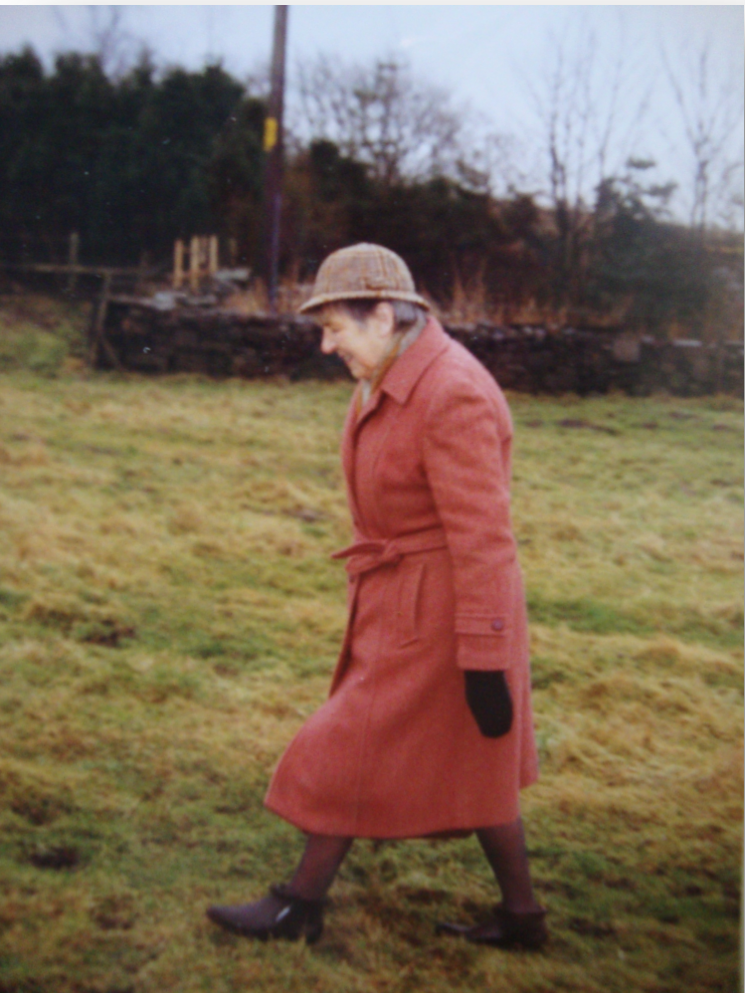
The path to the village: Photo taken in February 1994 . You had to be careful not to stand in the ploffs:
After his health necessitated his early retirement from teaching high school Dad spent his time rebuilding and remodeling the house. Here the front porch, dining room and second bedroom have been completed. There is no garage yet.
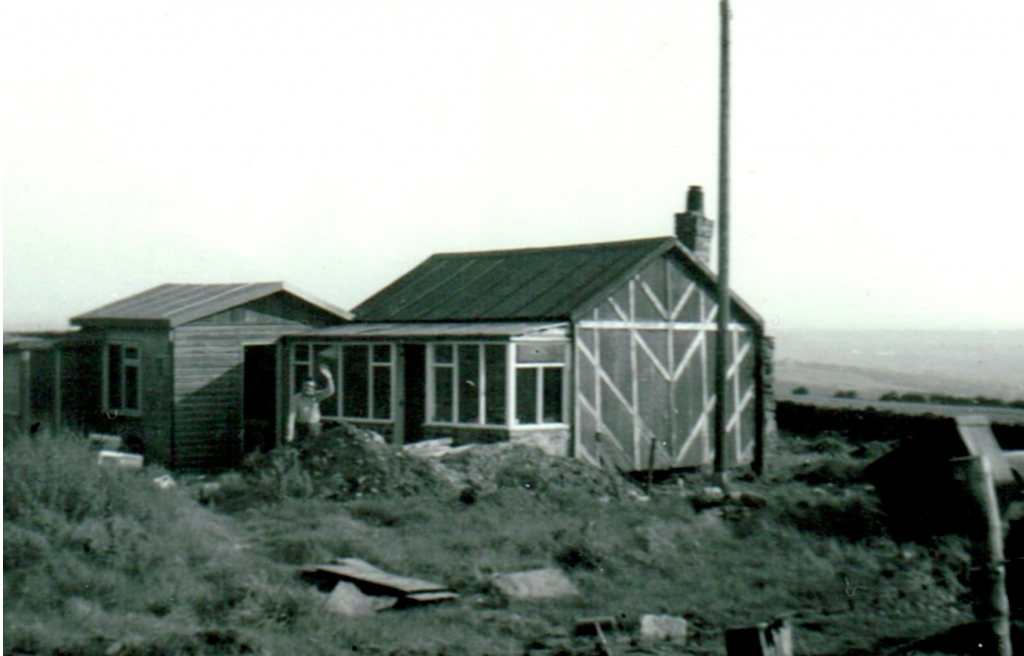
Life was tough at Affetside: My mom’s journal- December 29, 1993: Jack was taken up the fields on a stretcher at 1-1.30 a.m. and admitted to hospital in Bury. They were both 73 years old at the time. I think this was the last straw that eventually persuaded her that she had to move. I visited her in February of 1994. She was living alone there. Dad had moved to Holmwood nursing Home in Tottington the week before. It was bitterly cold in Affetside at that time of year. She used little electric fires but only in the room she was actually sitting in. So while the living room might have reached a cozy 75F (the fires didn’t have thermostats) the bathroom and kitchen and bedroom were still in the mid 40’s. I checked these temperatures with her thermometer.
From my journal about the trip:
‘I arrived at the house around 8p.m. The taxi driver didn’t mind driving down the fields
but as I opened the middle gate I was sliding around in mud. All was quiet at the house. It
was clear night, cold and breezy, and the lights of Bolton flickering in the distance were
an amazing sight. I used to look at this view every night through my bedroom curtains
before I fell asleep. I used to think of them as fairy lights. (No wonder Gary Neville,
captain of Manchester United built his 14 bedroom mansion in the next field. He was
paying for that view!) The next morning my mom woke me up with a cup of tea at 7.20 –
so eager to talk to me! Her first job every morning was to venture outside to feed the
birds (twopence per bag – as in Mary Poppins – mom always liked that song). There are
two robins and a female blackbird that have become tame through constant feeding –
chopped bread for the blackbird and chopped nuts for the robin. Mom even goes to a
special shop in Bury to purchase the nuts. The birds flew down to the front doorstep as
soon as she opened the door, and in the evenings, just at dusk, they come and perch on a
tree outside the lounge window as if to say Goodnight.
The next day, being Sunday there were no buses so we had to stay in. There was some sun
in the morning but heavy showers in the afternoon. I donned my raincoat, waterproof
trousers and willies and went for a walk down the fields. It was very hard climbing the
stile: goodness knows how my mom does it carrying her shopping and bottles of milk. The
old gully, dug out by open cast coal miners in the 1800’s (or possibly by the Roman
according to some sources) has been filled in. The two huge stone gate posts which
always lay down behind the barn have been taken up to another field and planted like a
miniature Stonehenge (I don’t recall that). Feb 8th. It was bitterly cold and raining hard
as we crossed the fields coming back from a trip to the solicitors – not my idea of fun. The
following day a friend took us around tottington to look at a possible new house for my
mom. Back on the Affetside bus we had to stop for a cow on the road. It was blowing a
gale right into our faces as we walked down the fields: my forehead hurt with the
coldness of the wind-chill. I remembered this exact feeling from being a child coming
home from school. Feb 12th As we crossed the field there was a bitterly cold East wind.
The ground was frozen and the grass was driven white. As we reached Ramsbottom it was
bright and sunny but I can’t remember when I was last as cold as that. Feb 13:. It was
bitterly cold with a heavily laden sky and flurries of sow. Mum couldn’t put the birds’
water out because it would freeze straight away. Feb 14: On the train going back to
Manchester airport at each station I saw huddles masses of frozen people with red faces,
blue noses and purple lips. They were even commenting on the coldness of the morning. I
was later to learn that it had been the coldest morning for 44 years. At Bolton station I
shivered all over – even my knees were knocking together. The snow was blowing onto the
platform and there was nowhere to shelter. On the plane I had a window seat and had
wonderful views of Iceland with its towering cliffs dropping into the sea. The snow shone
a beautiful pink color in the sunset. When I got home I came down with a cold – not
surprising really!
She had the house surveyed for sale on April 14th, 1994 and it was listed for £110.000.
She moved to 14 Laburnum Avenue Tottington, within walking distance of the nursing
home.




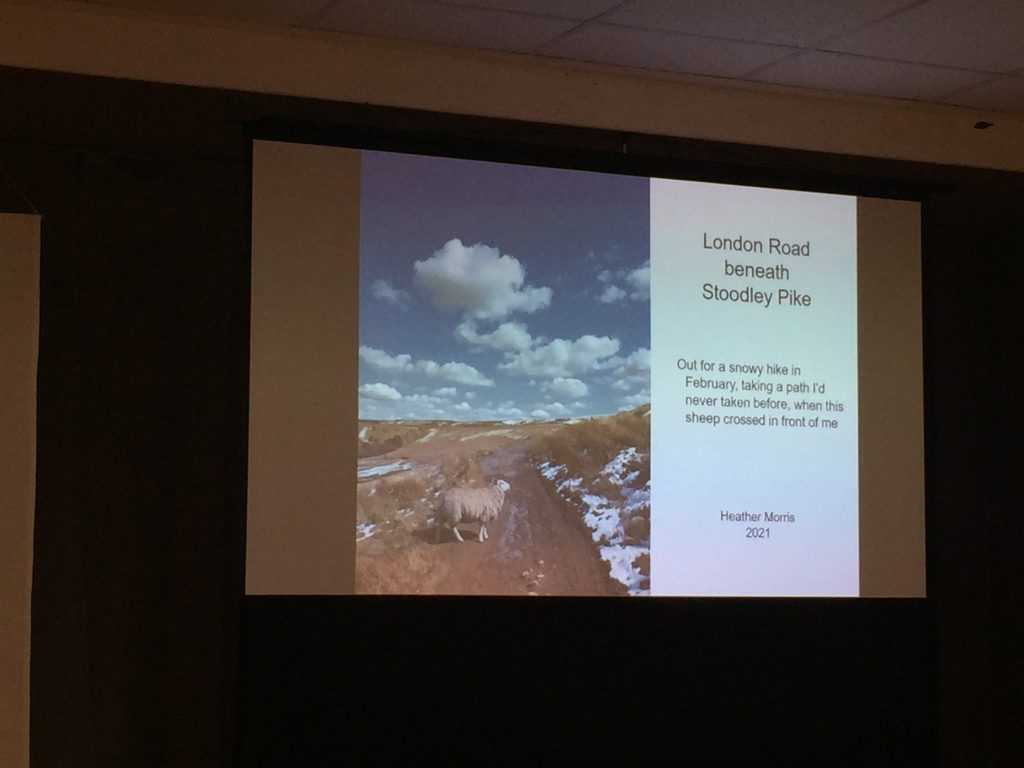
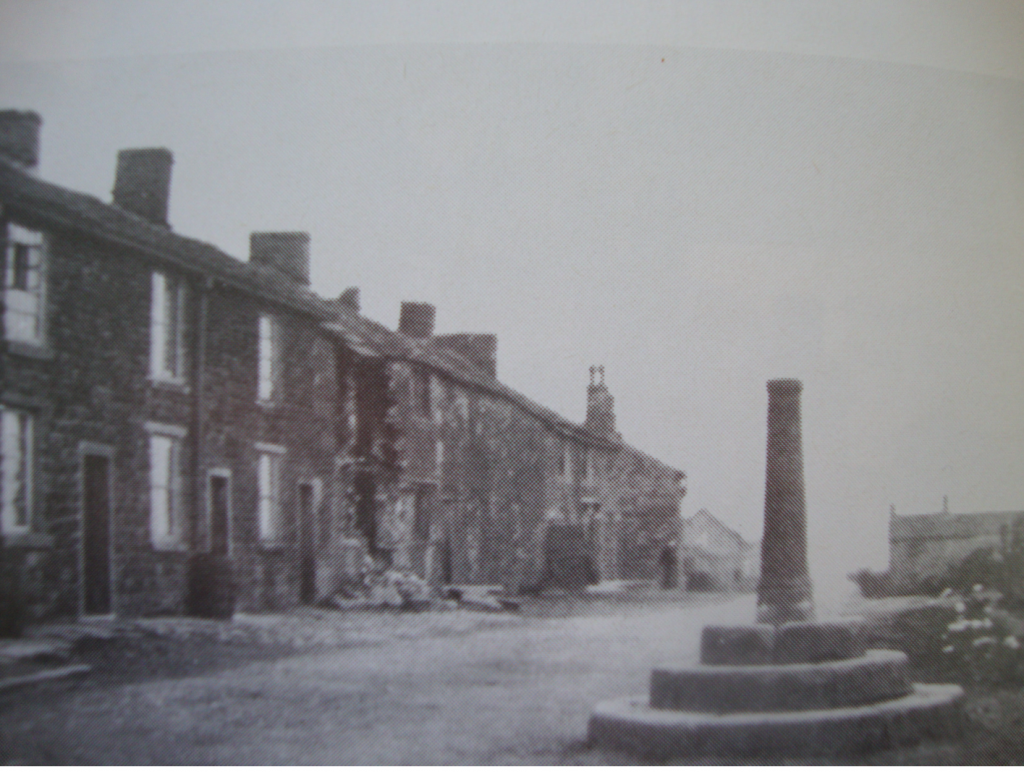
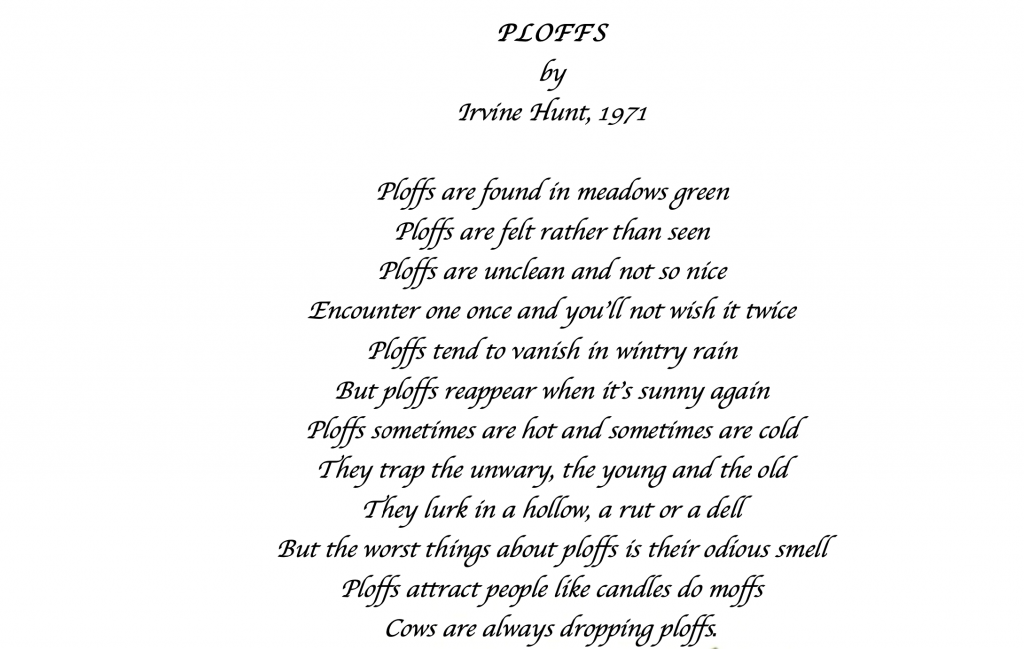
Recent Comments